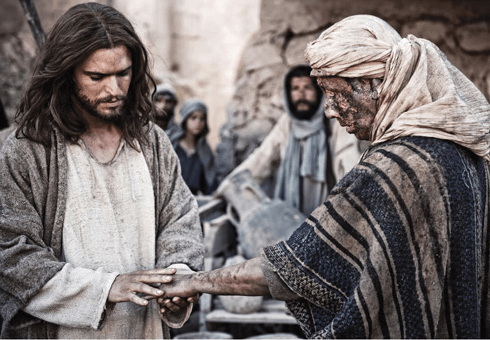This healing, we’re told, involved
a man full of leprosy–
in short, someone very much infected
but also very infectious.
Jesus knew it,
and so did the leper.
That’s why the leper decided
to check first with Jesus
if he even wanted to heal him.
Jesus responded,
“I will. Be healed.”
He said “yes” and healed the leper
in the same breath.
Even more remarkable
is that even if he didn’t have to,
but Jesus made sure
that he “stretched out his hand
and touched him.”

He didn’t have to
because this man’s leprosy
was particularly infectious.
And he didn’t have to
because we know
that Jesus had performed healing
without lifting a finger
or even saying a word!
It was important to touch the leper
because nobody ever did.
People were so terrified of catching leprosy
that lepers were isolated from society
and were obliged to ring a bell
to warn people of their approach.
Leprosy was as much
a physical affliction
as a social one.
Worse, lepers were condemned as sinners–
or children of sinners–
because leprosy was believed
to be a punishment from God.
So our Lord touches the leper
not only to show everyone watching
that it was okay to do so,
but also to show his compassion to a man
who had probably been untouched—
and had been hungry for touch—
for a very long time.
This was, in fact, typical of Jesus.
He spent all of his time
with what we would call “the dregs of society”:
the marginalized, the losers, and the rejects.
Jesus was notorious–
and was hated by his enemies–
for his friendships with the tax collectors
and prostitutes, the poor, and the lepers.

And the Lord Jesus died the way he had lived–
between two undesirables
and counted among the undesirables.
He died a man infected
by those he had served.